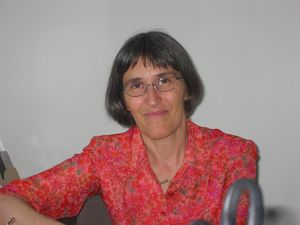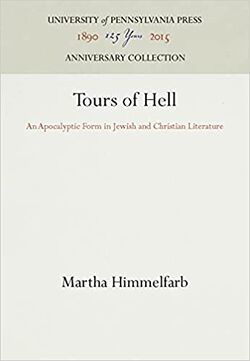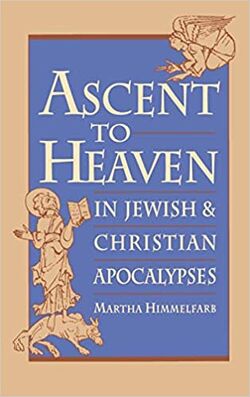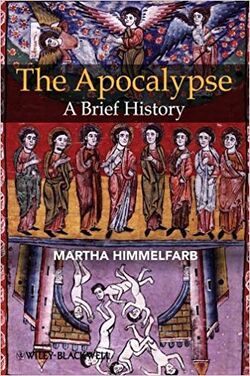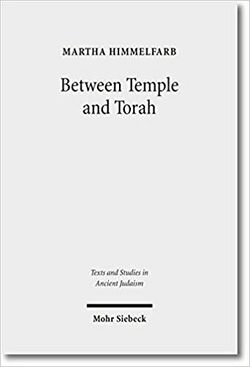Martha Himmelfarb, scholar
Revision as of 13:27, 5 December 2021 by Gabriele Boccaccini (talk | contribs)
Martha Himmelfarb is a Jewish-American scholar. Professor of Religions of Late Antiquity in the Dept. of Religion at Princeton University. Member of the Enoch Seminar
-- 1980s --
Martha Himmelfarb, Tours of Hell: An Apocalyptic Form in Jewish and Christian Literature (Philadelphia, PA: University of Pennsylvania Press, 1983)
- "From the ancient Book of the Dead to Dante's Divine Comedy, the living have attempted to describe the world of the dead. Tours of Hell focuses on one form of that attempt: the tours of hell found in Jewish and Christian apocalypses of late antiquity and the early Middle Ages ... Himmelfarb examines seventeen texts, preserved in five languages and spanning a thousand years of human history. These include Hebrew texts and Christian texts in Greek, Latin, Ethiopic, and Coptic, such as the Apocalypse of Peter and the Apocalypse of Paul family. Muslim texts, medieval visions, and other related literatures are also discussed. Himmelfarb details the common elements of the tour tradition, including such features as a hero or heroine figure, a heavenly revealer, and descriptions of the punishments awaiting those who arrive in hell. She convincingly refutes the accepted nineteenth-century critical view of the earliest of these tours, the Apocalypse of Peter, as a Christian form of an "Orphic-Pythagorean" descent to Hades. She place the work instead on the family tree of the tour apocalypse, a genre she traces back to the third century B.C.E. Book of the Watchers (1 Enoch 1-36). Linking the Apocalypse of Peter with later Jewish tours of hell, Himmelfarb reveals significant sin-and-punishment combinations that seem to point to a common source, which she theorizes to be a lost Jewish Tour work of the late Second Temple period ... Rich and fascinating texts seldom before brought to light are treated in detail in this pioneering study. A comprehensive work on the apocalyptic tradition, Tours of Hell will be of great interest to scholars and students of religion, history, ancient and medieval literature, and Dante studies."--Publisher description.
-- 1990s --
Martha Himmelfarb, Ascent to Heaven in Jewish and Christian Apocalypses (New York, NY: Oxford University Press, 1993)
- "This is a study of the ancient Jewish and Christian apocalypses involving ascent into heaven, which have received little scholarly attention in comparison to apocalypses concerned primarily with the end of the world. Recent developments like the publication of the Aramaic Enoch fragments from Qumran and interest in questions of genre in the study of the apocalypses make this a particularly appropriate time to undertake this study. Martha Himmelfarb places the apocalypses in relation to both their biblical antecedents and their context in the Greco-Roman world. Her analysis emphasizes the emergence of the understanding of heaven as temple in the Book of the Watchers, the earliest of these apocalypses, and the way in which this understanding affects the depiction of the culmination of ascent, the hero's achievement of a place among the angels, in the ascent apocalypses generally. It also considers the place of secrets of nature and primeval history in these works. Finally, it offers an interpretation of the pseudepigraphy of the apocalypses and their function."--Publisher description.
- Contents : Introduction -- 1. From Ezekiel to the Book of the Watchers -- 2. Heavenly Ascent and Priestly Investiture -- 3. Transformation and the Righteous Dead -- 4. The Secrets of Nature, Primeval History, and the Order of the Cosmos -- 5. The Apocalypses as Writing
-- 2000s --
Martha Himmelfarb, A Kingdom of Priests: Ancestry and Merit in Ancient Judaism (2006 Himmelfarb), book (Philadelphia, PA: University of Pennsylvania Press, 2006)
- "According to the account in the Book of Exodus, God addresses the children of Israel as they stand before Mt. Sinai with the words, "You shall be to me a kingdom of priests and a holy nation" (19:6). The sentence, Martha Himmelfarb observes, is paradoxical, for priests are by definition a minority, yet the meaning in context is clear: the entire people is holy. The words also point to some significant tensions in the biblical understanding of the people of Israel. If the entire people is holy, why does it need priests? If membership in both people and priesthood is a matter not of merit but of birth, how can either the people or its priests hope to be holy? How can one reconcile the distance between the honor due the priest and the actual behavior of some who filled the role? What can the people do to make itself truly a kingdom of priests? Himmelfarb argues that these questions become central in Second Temple Judaism. She considers a range of texts from this period, including the Book of Watchers, the Book of Jubilees, legal documents from the Dead Sea Scrolls, the writings of Philo of Alexandria, and the Book of Revelation of the New Testament, and goes on to explore rabbinic Judaism's emphasis on descent as the primary criterion for inclusion among the chosen people of Israel—a position, she contends, that took on new force in reaction to early Christian disparagement of the idea that mere descent from Abraham was sufficient for salvation."--Publisher description.
- Contents : -- 1. Priest and scribe: ancestry and professional skill in the Book of the watchers, the wisdom of Ben Sira, and Aramaic Levi -- 2. Jubilees' kingdom of priests -- 3. Priesthood and purity laws: the Temple scroll and the Damascus Document -- 4. Priesthood and sectarianism: the Rule of the community, the Damascus Document, and the book of Revelation -- 5. Priesthood and allegory: Philo and Alexandrian Judaism -- 6. "The children of Abraham your friend": the end of priesthood, the rise of Christianity, and the neutralization of Jewish sectarianism
